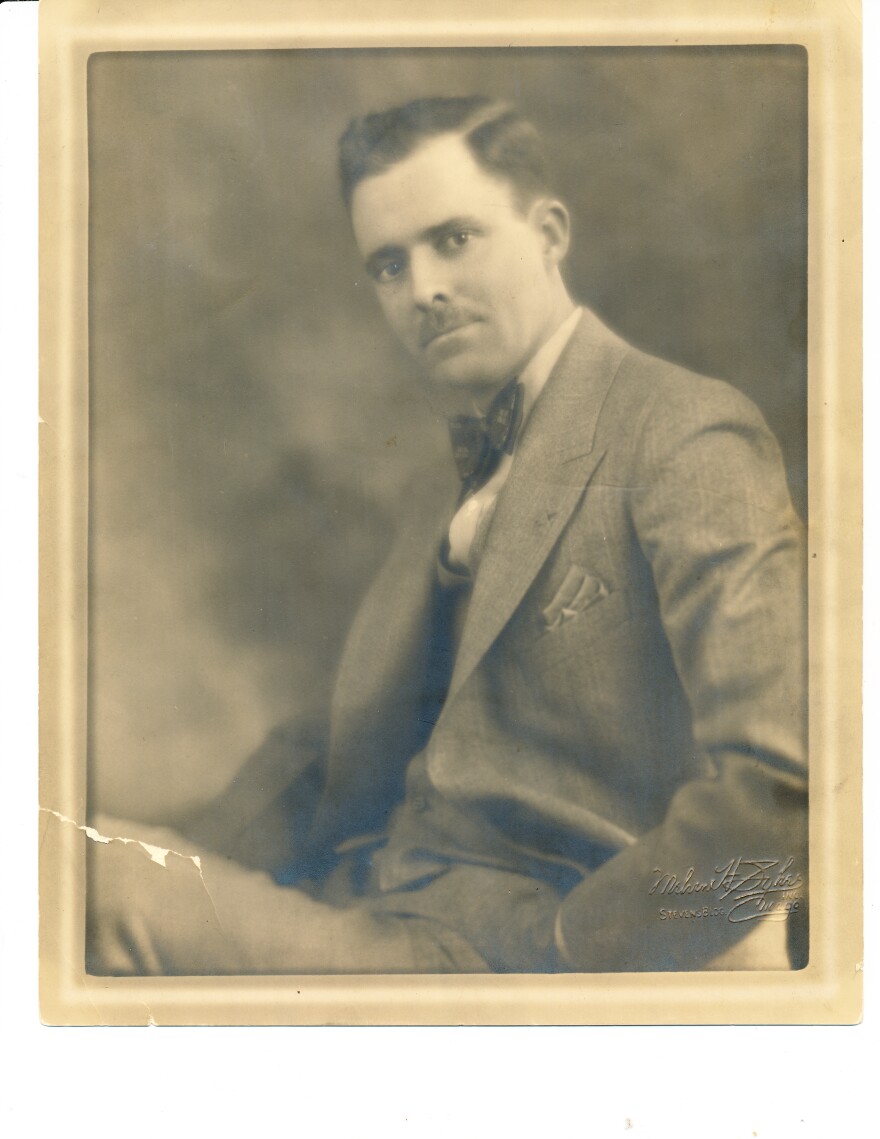
On Nov. 2, 1920, William E. Woods notched a historic first: He made St. Louis’ first radio broadcast, announcing election results from his home on De Tonty Street out to the airwaves.
From there, Lester A. Benson, Woods’ friend and fellow St. Louis radio enthusiast, picked up the broadcast and beamed it out over a 2,000-mile radius. The bulletins reached Little Rock, Arkansas; Ellendale, North Dakota; and “other outside towns,” as the St. Louis Post-Dispatch reported the next day.
The news also reached Woods’ wife in her St. Louis hospital bed. “A wireless telephone receiving station has been set up in her room so that she will hear the election returns,” the Post-Dispatch reported on Election Day.
The technology was so novel that the paper struggled to find the vocabulary to describe it. It only once deployed the word “radio” in its report, calling Woods a “radio expert,” even as it described his device as a “wireless telegraph sending apparatus.” (Proving that everything old is new again, its headline proclaimed “Wireless Telephone to Carry Vote Returns.”)
“You’ve got to remember how much of a treat and an oddity it was to hear voices coming over the airwaves,” Frank Absher, executive director of the St. Louis Media History Foundation, explained on St. Louis on the Air. “Back then, it didn't happen. For people to hear this, in earphones or anything else, was such a revelation. It was a form of communication that had never been done before.” Before broadcasts like Woods’ on election night, radios were used solely to transmit Morse code.
The year 1920 proved a watershed year for the new technology, Absher said. A radio station in Detroit had recently started playing music over the airwaves. And St. Louis’ election result broadcast was one of a few that night, with enthusiasts taking to their devices in cities including Detroit and Buffalo. (Pittsburgh station KDKA grabbed all the glory, Absher said, thanks to the publicity managers at Westinghouse, who made sure the station was credited for its broadcast.)
“They were all being done by people experimenting,” he said of the 1920 broadcasts.
But after that night, things took off quickly. WEW signed on the air with its first regular broadcast on April 21, 1921. KST followed just 11 months later, Absher said.
“They weren’t radio stations like we think of today,” he added. “They would come on the air and they’d be on for three or four hours and then they’d sign off, because they didn’t have anything else to broadcast.”
In November 1920, though, the technology seemed new and wonderful. And for no one more so than the ailing Dorothy Crabb Woods. She was a suffragist, her grandson Dr. William Woods Batterson recalled to St. Louis on the Air, and thanks in part to her work, women had the right to vote in the 1920 presidential election for the first time.
She was herself a radio enthusiast. Batterson recalled that she met her husband by chatting in Morse code. “When they got married, they called each other Dot and Dash,” he said.
That election night, Dorothy Crabb Woods was likely in the hospital after an asthma attack, her grandson recalled. She suffered from them frequently.
Unfortunately for the hospital patient, however, the news relayed by that radio bulletin wasn’t good. Warren G. Harding was declared the winner that night, and the Woodses were staunch Democrats, Batterson recalled. They likely backed Harding’s opponent.
“St. Louis on the Air” brings you the stories of St. Louis and the people who live, work and create in our region. The show is hosted by Sarah Fenske and produced by Alex Heuer, Emily Woodbury, Evie Hemphill and Lara Hamdan. The audio engineer is Aaron Doerr.




